I’ve been using the system for the past 3 months while waiting for PTO. I received PTO today, 115~ days since passing my install inspection, and my system is broken. The irony  . Tesla support submitted a ticket and told me to give them 3-5 days to remotely diagnose the system. They’ll either email me that they fixed it, or someone will eventually contact me regarding scheduling an onsite visit to further diagnose.
. Tesla support submitted a ticket and told me to give them 3-5 days to remotely diagnose the system. They’ll either email me that they fixed it, or someone will eventually contact me regarding scheduling an onsite visit to further diagnose.
My Powerwall+, Powerwall 2, 3x340w panels, and Backup Gateway 2 were installed this June. As of midday yesterday the Powerwall+’s gateway left my wifi network, and 2 hours after that I no longer have any data from the meters showing up in the Tesla app. The lights on the Powerwalls are flashing green (not pulsating). There is a musical tone playing every so often from something in the Powerwall+’s inverter/gateway. The LED light on the inverter/gateway (bottom side in this orientation) is blinking once every 4 seconds. According to Tesla documentation this indicates that the Powerwalls cannot talk to the gateway (my BG2?). I have tried following Tesla’s troubleshooting guide to restart the system but after multiple attempts, including with Tesla Energy Support (Powerwall) on the phone, it still isn’t working. I can’t see the TEG wifi network being broadcasted either. I’ve tried connecting the Powerwall+’s inverter/gateway into my network via ethernet and it does not connect. I’ve tried pressing the reset button in my Backup Gateway 2. I’ve tried turning off everything: Powerwall toggle switches, AC disconnect blade, breakers for both Powerwalls within my BG2, and my main panel main breaker. The support agent I talked to thinks that the system can’t talk to one of the CTs but I think the only “remote” CT I have is the Neurio that is within my Powerwall+’s inverter / gateway.
Any suggestions?
Additional Info:
I created my own data logger which was monitoring the system via my Powerwall+‘s gateway local API. It took Tesla over 3 months to file for PTO with my utility company. The utility company came out last Thursday to inspect everything and sign off for PTO (I already had a smart meter). My system was never put into “Self Consumption Only“ mode by Tesla, but my advisor told me to turn the system on a few weeks ago so that Tesla could remotely configure my system in that mode until I get PTO. The system worked fine for 3 days since my utility company inspection. All they did was open up the meter panel (painted blue, to the left of my BG2 in the attachment) to make sure Tesla didn’t tie into the system up in the meter panel area. I don’t know if I have a CT anywhere in there. I have not removed its deadfront.
My Powerwall+, Powerwall 2, 3x340w panels, and Backup Gateway 2 were installed this June. As of midday yesterday the Powerwall+’s gateway left my wifi network, and 2 hours after that I no longer have any data from the meters showing up in the Tesla app. The lights on the Powerwalls are flashing green (not pulsating). There is a musical tone playing every so often from something in the Powerwall+’s inverter/gateway. The LED light on the inverter/gateway (bottom side in this orientation) is blinking once every 4 seconds. According to Tesla documentation this indicates that the Powerwalls cannot talk to the gateway (my BG2?). I have tried following Tesla’s troubleshooting guide to restart the system but after multiple attempts, including with Tesla Energy Support (Powerwall) on the phone, it still isn’t working. I can’t see the TEG wifi network being broadcasted either. I’ve tried connecting the Powerwall+’s inverter/gateway into my network via ethernet and it does not connect. I’ve tried pressing the reset button in my Backup Gateway 2. I’ve tried turning off everything: Powerwall toggle switches, AC disconnect blade, breakers for both Powerwalls within my BG2, and my main panel main breaker. The support agent I talked to thinks that the system can’t talk to one of the CTs but I think the only “remote” CT I have is the Neurio that is within my Powerwall+’s inverter / gateway.
Any suggestions?
Additional Info:
I created my own data logger which was monitoring the system via my Powerwall+‘s gateway local API. It took Tesla over 3 months to file for PTO with my utility company. The utility company came out last Thursday to inspect everything and sign off for PTO (I already had a smart meter). My system was never put into “Self Consumption Only“ mode by Tesla, but my advisor told me to turn the system on a few weeks ago so that Tesla could remotely configure my system in that mode until I get PTO. The system worked fine for 3 days since my utility company inspection. All they did was open up the meter panel (painted blue, to the left of my BG2 in the attachment) to make sure Tesla didn’t tie into the system up in the meter panel area. I don’t know if I have a CT anywhere in there. I have not removed its deadfront.
Attachments
-
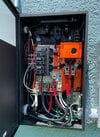 3D2DB781-76CE-44FE-B795-D13590ED701F.jpeg1.5 MB · Views: 1,803
3D2DB781-76CE-44FE-B795-D13590ED701F.jpeg1.5 MB · Views: 1,803 -
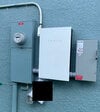 B7069930-768F-4011-8598-0D6FBE859EBC.jpeg1.1 MB · Views: 344
B7069930-768F-4011-8598-0D6FBE859EBC.jpeg1.1 MB · Views: 344 -
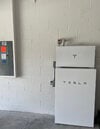 7F73A4C4-D6AB-4BA0-94C9-AAC1CA64C73E.jpeg895.4 KB · Views: 276
7F73A4C4-D6AB-4BA0-94C9-AAC1CA64C73E.jpeg895.4 KB · Views: 276 -
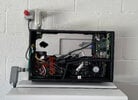 7E43D0AE-FAAC-49DF-8FDD-358A469F7582.jpeg2 MB · Views: 294
7E43D0AE-FAAC-49DF-8FDD-358A469F7582.jpeg2 MB · Views: 294 -
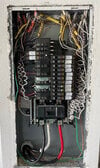 F7F6EC20-B3CC-4548-960B-3C5E90866095.jpeg1.6 MB · Views: 339
F7F6EC20-B3CC-4548-960B-3C5E90866095.jpeg1.6 MB · Views: 339
Last edited:


